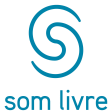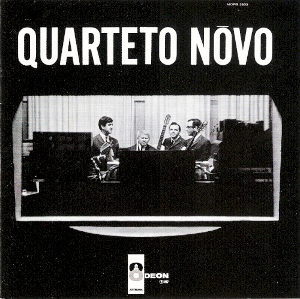
Flora Purim is a Brazilian jazz singer known primarily for her work in the jazz fusion style. She became prominent for her part in Return to Forever with Chick Corea and Stanley Clarke. She has recorded and performed with numerous artists, including Dizzy Gillespie, Gil Evans, Opa, Stan Getz, George Duke, Mickey Hart of the Grateful Dead, Santana, Jaco Pastorius, and her husband Airto Moreira.

Jovino Santos Neto is a Seattle-based Brazilian-American jazz pianist, flutist, composer, arranger, educator and record producer.

Airto Guimorvan Moreira is a Brazilian jazz drummer, composer and percussionist. He is married to jazz singer Flora Purim, and their daughter Diana Moreira is also a singer. Coming to prominence in the late 1960s as a member of the Brazilian ensemble Quarteto Novo, he moved to the United States and worked in jazz fusion with Miles Davis, Return to Forever, Weather Report and Santana.

Antônio Maurício Horta de Melo is a Brazilian jazz guitarist and vocalist.

Pedro Anibal de Oliveira Gomes, better known as Pepeu Gomes is an accomplished Brazilian guitar player, multi-instrumentalist and composer. He was one of the members of Novos Baianos. Pepeu has already been considered by the magazine Guitar World in 1988 as one of the ten best guitarists in the world in the category world music.

Romero Lubambo is a Brazilian jazz guitarist.

Charles de Souza Gavin is a Brazilian drummer and music producer, perhaps best known for his 25-year tenure with rock band Titãs. Before Titãs, he had brief stints at Ira! and RPM.

Som Livre is a Brazilian record company that was founded in March 1969 in order to commercialize the soundtracks for TV Globo soap operas and later expanded to recording studio albums. As of 2024, it is owned by Sony Music.
Lelo Nazario is a Composer, arranger, pianist, producer and musical director whose work is marked by experimentation and timelessness. Recognized in his native Brazil and abroad as the creator of a unique style that blends contemporary classical music and jazz with avant-garde forms and Brazilian motifs, he wrote award-winning music which includes works for piano, orchestra and ensembles of various configurations as well as electroacoustic music, film scores, television, opera, dance and theater.
Heraldo do Monte is a Brazilian guitarist. He has played on albums by Gilberto Gil and Hermeto Pascoal.
Teófilo Augusto de Barros Neto, better known as Théo de Barros, was a Brazilian composer. From the 1960s he released and participated on albums with other Brazilian artists.

Em som maior is the only album recorded by Sambrasa Trio, a Brazilian group formed by Hermeto Pascoal, Humberto Clayber and Airto Moreira. It was released on an LP in 1965 and presents a fusion of various musical rhythms, including samba and jazz. In 2006, after long period of neglect, this album was reissued on CD as one of works included in Som Livre Masters series, organized by Charles Gavin.
Sambrasa Trio is a Brazilian samba and jazz group, formed by Hermeto Pascoal, Humberto Clayber and Airto Moreira (drums). The band started to play in 1965, but it did not last long. However, its music and Brazilian popular songs influenced many instrumental samba and jazz musicians for years.
Sambalanço Trio was a Brazilian samba-jazz group formed by Cesar Camargo Mariano (piano), Humberto Clayber (bass) and Airto Moreira (drums). The band started to play in 1964 and lasted for about two years. Their albums are considered some of the most important works of that period and influenced many other groups of samba and jazz.
Humberto Clayber de Souza is a Brazilian composer and musician. He was considered one of the best Bossa Nova bass players in 1960s and actually is acclaimed as one of the best harmonica players of the world. He played with many famous artists along his career, such as Cesar Camargo Mariano, Airto Moreira, Hermeto Pascoal and Manfredo Fest.

Quarteto Novo was a group formed in São Paulo, Brazil in 1966 which released one landmark instrumental album and launched the careers of some of the band's members. The eponymous 1967 album has been influential in jazz and pop music.

Quarteto Novo is a 1967 album by the Brazilian jazz quartet Quarteto Novo. It was the band's only album.

Sergio Mendes Presents Lobo is a 1971 album by Edu Lobo, produced by Sergio Mendes.

Antônio Carlos Moreira Pires, better known as Moraes Moreira, was a Brazilian musician and songwriter. During the 1970s he played guitar and sang in the band Novos Baianos, after which he embarked on a solo career recording 29 albums. Moreira was involved in recording 40 full-length albums with Novos Baianos and Trio Elétrico Dodô e Osmar, and two more albums with guitarist Pepeu Gomes. Moreira was one of the most versatile composers of Brazil, mixing the genres of rock, samba, choro, frevo, baião, and classical.















